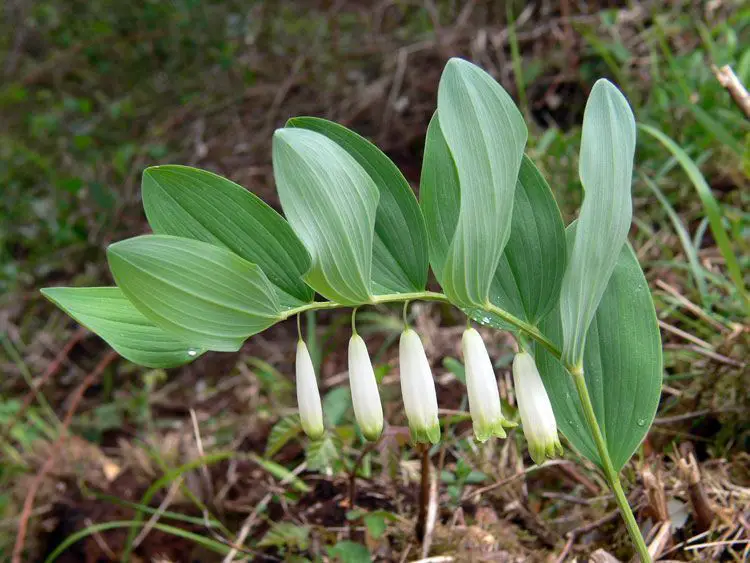
Easily grown in moist, humusy, organically rich, well-drained soils in part shade to full shade. Best performance occurs in cool sun-dappled shady areas. Dislikes hot summer conditions. Slowly spreads by thin rhizomes to form colonies in optimum growing conditions.

Polygonatum odoratum, commonly called fragrant Solomon's seal, is a rhizomatous, shade-loving perennial that typically grows to 18-24” tall on low, gracefully arching, angled (as opposed to cylindrical), unbranched stems. It is native to shaded slopes and woodland areas in temperate regions of Europe and Asia. Each stem (to 18” long) rises singly from the rhizome clad with 8-17 alternate, upright, parallel-veined, elliptic to ovate-oblong leaves (to 4” long). Leaves turn an attractive yellow in fall. Greenish-white tubular flowers (to 7/8” long) on short pedicels droop (usually in pairs but sometimes solitarily) from the leaf axils along and beneath the arching stems. Flowers have a sweet, lily-like fragrance. Flowers bloom late spring to early summer (May-June). Flowers are followed by attractive pendulous blue-black berries (each 1/4" diameter) in fall which hang downward from the leaf axils.
Genus name comes from Greek poly meaning many and gonu meaning knee joint in reference to the jointed plant rhizomes.
Specific epithet comes from the Latin word odoratus meaning sweet smelling in reference to the fragrance of plant flowers.

Common name is usually considered to be in reference to the large, circular seals (leaf stalk scars) located on the rhizomes. However, some authorities suggest the common name actually refers to “wound sealing properties” of the plant.
Var. pluriflorum is native to Japan, Korea and China. From Latin, pluriflorum means many flowered.
‘Variegatum’ is a popular cultivar of var. pluriflorum. It features showy light green leaves edged with white. New stems are tinged with maroon red. It is a superior foliage ornamental for shady garden areas. Perennial Plant Association’s 2013 Perennial Plant of the Year. Synonymous with and formerly known as P. odoratum var. thunbergii ‘Variegatum’.
Problems
No serious insect or disease problems. All parts of this plant may cause discomfort if ingested by humans (plants contain small amounts of saponin and convallamarin). Watch for slugs, snails, weevils and sawflies. Leaf spot and rust infrequently appear.
Garden Uses
Best in woodland gardens or shady areas of rock gardens or border fronts. Foliage is attractive in flower arrangements.
No comments:
Post a Comment